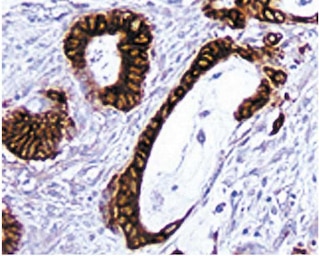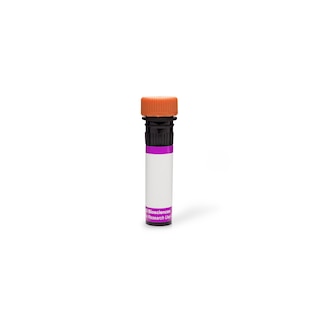-
抗体試薬
- フローサイトメトリー用試薬
-
ウェスタンブロッティング抗体試薬
- イムノアッセイ試薬
-
シングルセル試薬
- BD® AbSeq Assay
- BD Rhapsody™ Accessory Kits
- BD® OMICS-One Immune Profiler Protein Panel
- BD® Single-Cell Multiplexing Kit
- BD Rhapsody™ TCR/BCR Next Multiomic Assays
- BD Rhapsody™ Targeted mRNA Kits
- BD Rhapsody™ Whole Transcriptome Analysis (WTA) Amplification Kit
- BD® OMICS-Guard Sample Preservation Buffer
- BD Rhapsody™ ATAC-Seq Assays
- BD® OMICS-One Protein Panels
-
細胞機能評価のための試薬
-
顕微鏡・イメージング用試薬
-
細胞調製・分離試薬
-
- BD® AbSeq Assay
- BD Rhapsody™ Accessory Kits
- BD® OMICS-One Immune Profiler Protein Panel
- BD® Single-Cell Multiplexing Kit
- BD Rhapsody™ TCR/BCR Next Multiomic Assays
- BD Rhapsody™ Targeted mRNA Kits
- BD Rhapsody™ Whole Transcriptome Analysis (WTA) Amplification Kit
- BD® OMICS-Guard Sample Preservation Buffer
- BD Rhapsody™ ATAC-Seq Assays
- BD® OMICS-One Protein Panels
- Japan (Japanese)
-
Change country/language
Old Browser
Looks like you're visiting us from United States.
Would you like to stay on the current country site or be switched to your country?
BD Pharmingen™ Purified Rat Anti-Mouse CD106
クローン 429 (MVCAM.A) (RUO)



Immunohistochemical staining of CD106. Frozen sections of normal mouse spleen were reacted with the anti-CD 106 antibody. Cells expressing CD106 can be identified by the brown labeling of their cell membranes. Amplification 20X.


BD Pharmingen™ Purified Rat Anti-Mouse CD106

Regulatory Statusの凡例
Any use of products other than the permitted use without the express written authorization of Becton, Dickinson and Company is strictly prohibited.
Preparation and Storage
推奨アッセイ手順
Immunohistochemistry: The 429 antibody specific for mouse CD106 is recommended to test for immunohistochemical staining of acetone-fixed frozen sections. Tissues tested were mouse spleen and thymus. The antibody stains bone marrow stromal cells and myeloid cells and activated endothelial cells. The isotype control recommended for use with this antibody is purified rat IgG2a (Cat. No. 559073). For optimal indirect immunohistochemical staining, the 429 antibody should be titrated (1:10 to 1:50 dilution) and visualized via a three-step staining procedure in combination with polyclonal, biotin conjugated anti-rat Igs (multiple adsorbed) (Cat. No. 559286) as the secondary antibody and Streptravidin-HRP (Cat. No. 550946) together with the DAB detection system (Cat. No. 550880). A detailed protocol of the immunohistochemical procedure is available at our website, http://www.bdbiosciences.com/support/resources.
Product Notices
- Since applications vary, each investigator should titrate the reagent to obtain optimal results.
- Caution: Sodium azide yields highly toxic hydrazoic acid under acidic conditions. Dilute azide compounds in running water before discarding to avoid accumulation of potentially explosive deposits in plumbing.
- Source of all serum proteins is from USDA inspected abattoirs located in the United States.
- This antibody has been developed for the immunohistochemistry application. However, a routine immunohistochemistry test is not performed on every lot. Researchers are encouraged to titrate the reagent for optimal performance.
- An isotype control should be used at the same concentration as the antibody of interest.
- Please refer to www.bdbiosciences.com/us/s/resources for technical protocols.
関連製品






最近閲覧済み
The 429 monoclonal antibody specifically binds to both the long (~110 kDa) transmembrane-spanning form and the truncated (~47 kDa) GPI-linked form of vascular cell adhesion molecule-1 (VCAM-1, CD106). CD106 is constitutively expressed on bone marrow stromal cells, myeloid cells, and splenic dendritic cells. Its expression on endothelial cells is upregulated by inflammatory cytokines and in certain pathologic conditions. CD106 expression has also been detected on apoptotic thymocytes, splenocytes, and lymphoid cell lines. VCAM-1 is a counter-receptor for VLA-4 (α4β1 integrin) and LPAM-1 (α4β7 integrin), and the 429 antibody partially blocks VCAM-1-mediated binding functions. Source of the immunogen was the mouse preadipose cell line PA6.
Development References (3)
-
Bevilacqua MP. Endothelial-leukocyte adhesion molecules. Annu Rev Immunol. 1993; 11:767-804. (Biology). View Reference
-
Kinashi T, Springer TA. Adhesion molecules in hematopoietic cells. Blood Cells. 1994; 20(1):25-44. (Biology). View Reference
-
Kinashi T, St Pierre Y, Springer TA. Expression of glycophosphatidylinositol-anchored and -non-anchored isoforms of vascular cell adhesion molecule 1 in murine stromal and endothelial cells. J Leukoc Biol. 1995; 57(1):168-173. (Immunogen). View Reference
Please refer to Support Documents for Quality Certificates
Global - Refer to manufacturer's instructions for use and related User Manuals and Technical data sheets before using this products as described
Comparisons, where applicable, are made against older BD Technology, manual methods or are general performance claims. Comparisons are not made against non-BD technologies, unless otherwise noted.
For Research Use Only. Not for use in diagnostic or therapeutic procedures.
